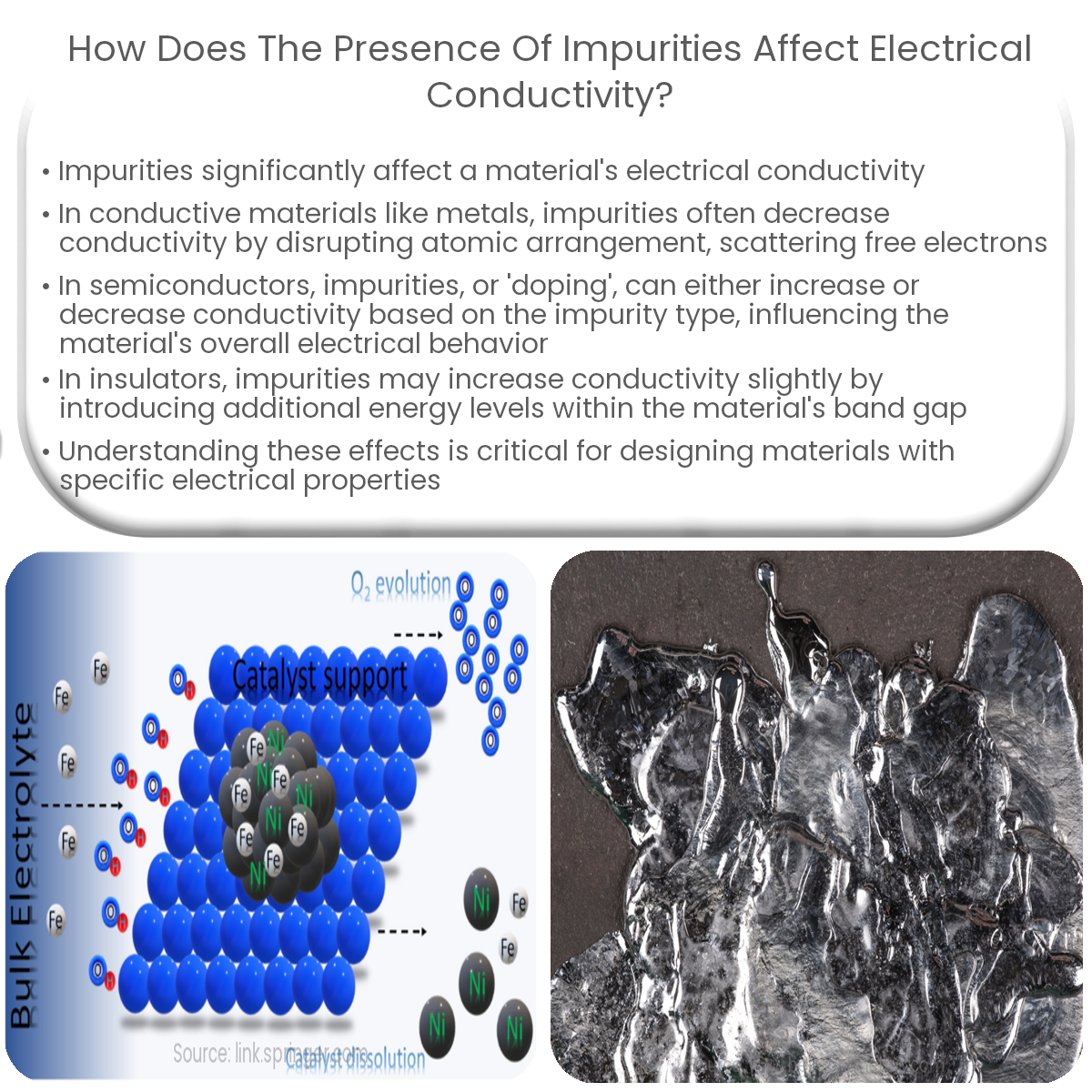Impurities can increase or decrease electrical conductivity in materials, depending on their nature and the material type – conductors, semiconductors, or insulators.
Impact of Impurities on Electrical Conductivity
Electrical conductivity is a measure of a material’s ability to conduct an electric current. The presence of impurities can have a significant effect on the electrical conductivity of materials, either increasing or decreasing it depending on the nature of the impurities and the host material. This article explores the various ways in which impurities influence electrical conductivity.
Conductors
In conductive materials like metals, the presence of impurities can lead to a decrease in electrical conductivity. This occurs because impurities disrupt the regular arrangement of atoms in the material’s lattice, scattering the free electrons that are responsible for carrying an electric current. The more impurities present, the greater the scattering effect, leading to increased electrical resistance and reduced conductivity.
Semiconductors
In semiconductors, impurities can have either a positive or negative effect on electrical conductivity, depending on the type of impurity. When impurities are deliberately introduced to a semiconductor to alter its electrical properties, the process is called doping. There are two types of doping: n-type and p-type.
- n-type doping: In this case, impurities with more valence electrons than the host material are introduced. These extra electrons are free to move within the material, increasing its conductivity.
- p-type doping: Impurities with fewer valence electrons than the host material are introduced, creating “holes” or positively charged vacancies in the material. These holes can accept electrons from neighboring atoms, leading to an increase in conductivity.
In semiconductors, the presence and concentration of impurities can greatly influence the material’s overall electrical behavior, making doping a crucial step in the fabrication of semiconductor devices like transistors and diodes.
Insulators
For insulators, the presence of impurities can sometimes increase electrical conductivity, albeit to a limited extent. In this case, impurities may introduce additional energy levels within the material’s band gap, allowing some electrons to overcome the energy barrier and contribute to conduction. However, the overall conductivity of the material typically remains low due to the intrinsic insulating nature of the material.
Conclusion
Impurities play a critical role in determining the electrical conductivity of various materials, with different effects on conductors, semiconductors, and insulators. Understanding these effects is essential for designing and fabricating materials with desired electrical properties for various applications.


